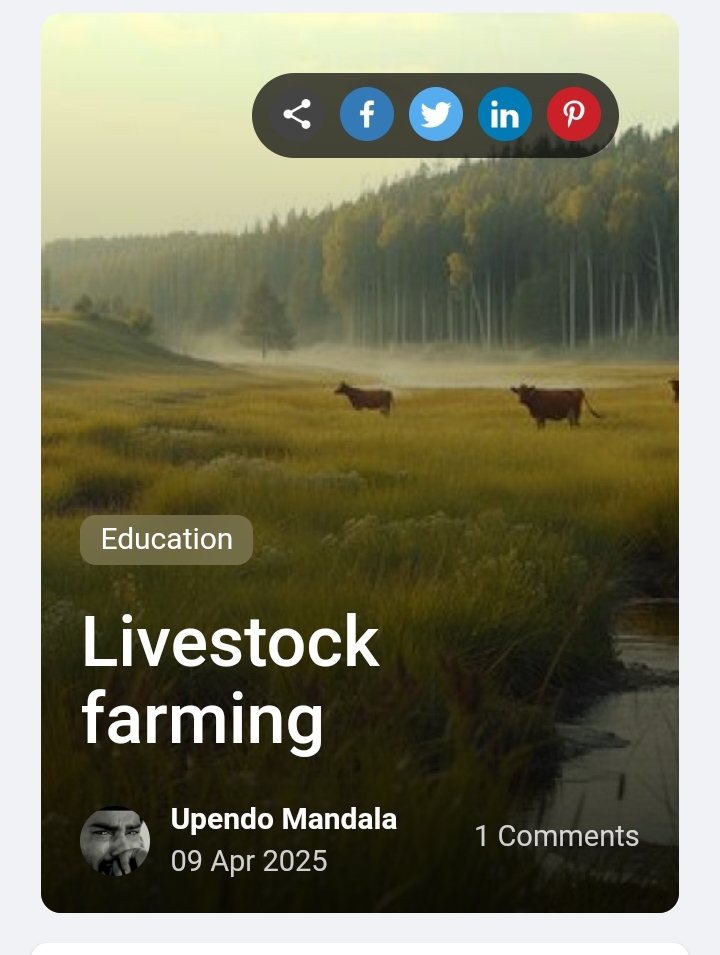TABLE OF CONTENTS
Definition
Systems of livestock farming
Economic and nut. Role
Environmental impact
Ethical and social dimensions
Technological innovations
Future challenges and opportunities

Livestock farming, the practice of raising animals for food, labor, or raw materials, is a cornerstone of global agriculture. It encompasses cattle, poultry, sheep, goats, pigs, and other animals, providing meat, dairy, eggs, wool, leather, and manure. This sector supports livelihoods, drives economies, and meets dietary needs but also faces scrutiny over environmental, ethical, and sustainability challenges.
Systems of Livestock Farming
Livestock farming operates under two primary systems: **intensive** and **extensive**.
– Intensive systems (industrial or factory farming) prioritize high productivity through confined spaces, controlled environments, and specialized feed. While efficient and cost-effective, these systems raise concerns about animal welfare, antibiotic overuse, and environmental degradation.
– Extensive systems (pasture-based or free-range) allow animals to graze on open land, aligning with natural behaviors. Though more sustainable, they require larger land areas and yield lower outputs, making them vulnerable to climate fluctuations and land scarcity.
Economic and Nutritional Role
Livestock farming contributes significantly to global economies, particularly in developing nations where it employs millions and supports rural communities. It accounts for 40% of agricultural GDP in some countries, with exports of meat, dairy, and wool generating critical revenue. Nutritionally, animal products supply essential proteins, vitamins (B12, D), and minerals (iron, zinc), addressing food security in regions with limited dietary diversity.
Environmental Impact
The sector is a major environmental contributor, responsible for **14.5% of global greenhouse gas emissions**, primarily methane from cattle digestion and manure. Deforestation for grazing or feed crops (e.g., soy) exacerbates biodiversity loss, while overgrazing leads to soil erosion and desertification. Water pollution from manure runoff and antibiotic residues further strains ecosystems. Mitigation strategies include improved waste management, agroforestry integration, and methane-reducing feed additives.
Ethical and Social Dimensions
Animal welfare debates center on confinement practices, overcrowding, and routine procedures like debeaking or tail docking. Conversely, livestock holds cultural significance in many societies, symbolizing wealth or forming part of traditional practices (e.g., pastoralism). Rising demand for ethically sourced products has spurred certifications like “free-range” or “organic,” though accessibility and cost remain barriers.
Technological Innovations
Advancements aim to balance productivity with sustainability:
– recision farming, uses sensors and AI to monitor animal health and optimize feed.
-Alternative proteins, such as plant-based meats and lab-grown cultured meat, offer eco-friendly alternatives.
-Genetic engineering, enhances disease resistance and productivity in livestock breeds.
Future Challenges and Opportunities
Global meat demand is projected to rise 70% by 2050, intensifying pressure on resources. Climate change further threatens feed availability and animal health. Sustainable solutions include adopting **regenerative agriculture**, reducing reliance on monoculture feed crops, and promoting circular economies (e.g., using manure for biogas). Consumer shifts toward plant-based diets and ethical consumption also drive market evolution.
In conclusion, livestock farming remains vital yet contentious. Balancing its economic benefits with environmental stewardship and ethical practices will define its role in a sustainable future. Innovations and policy reforms are critical to ensuring food security while safeguarding planetary health.
Leave a Reply